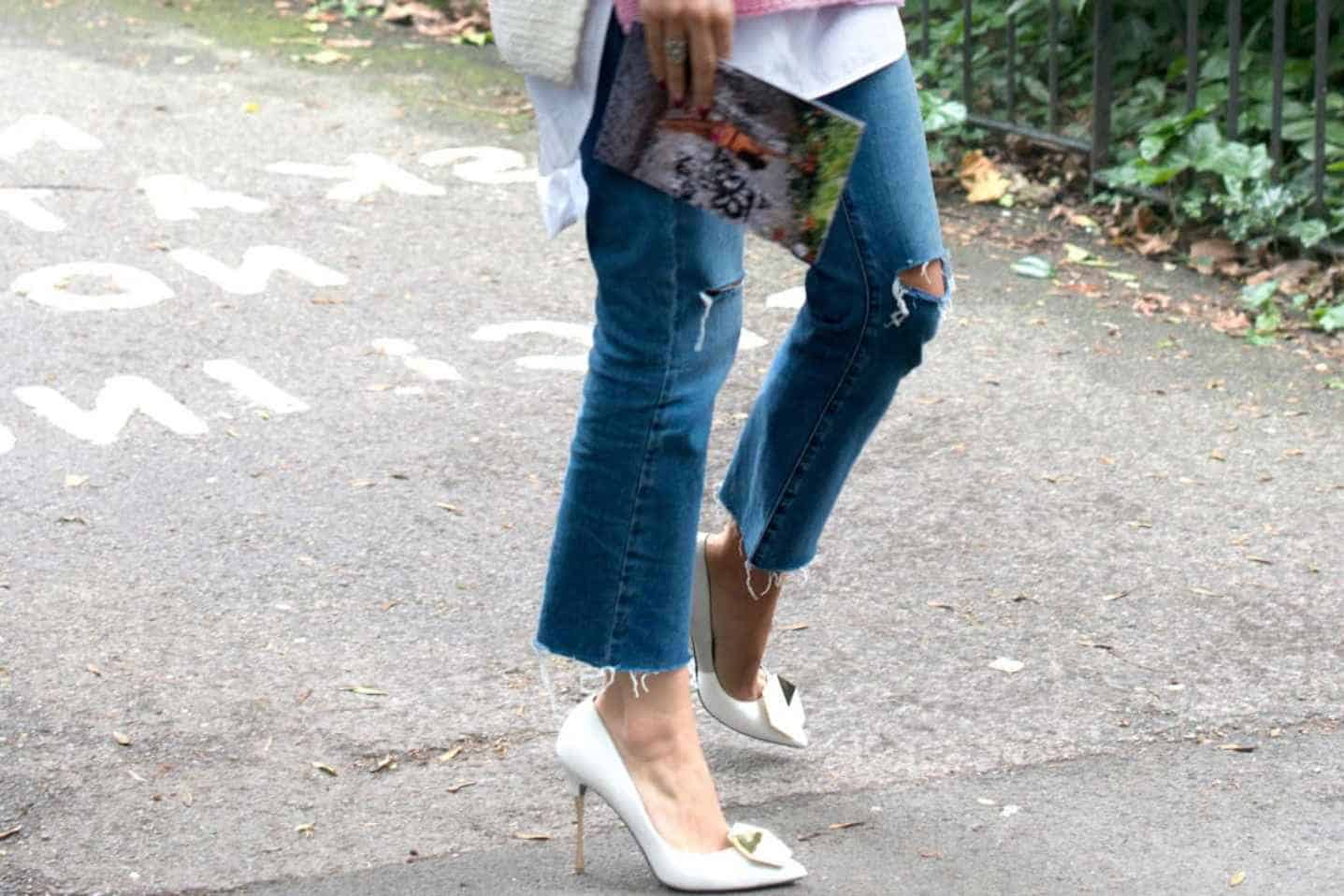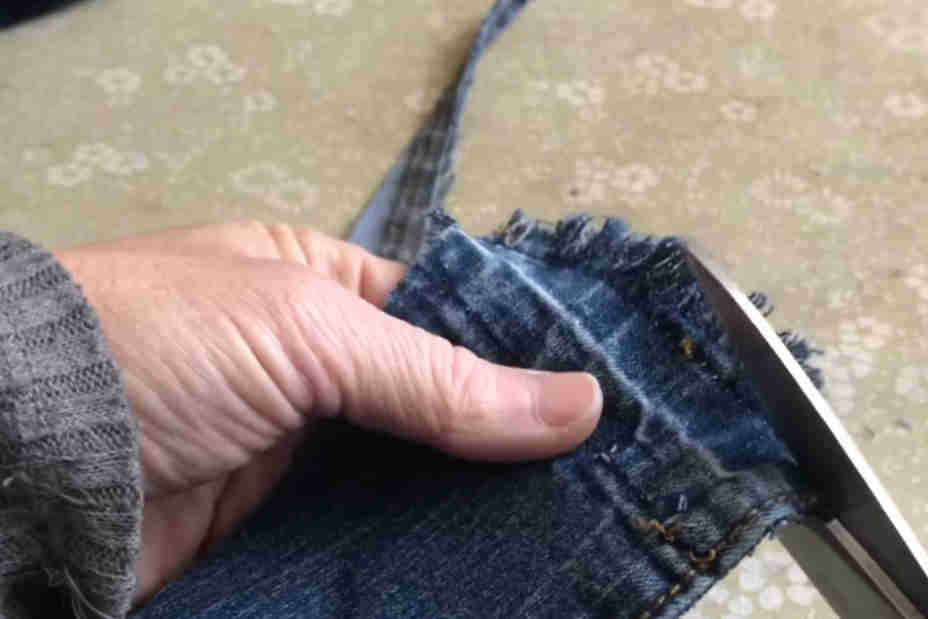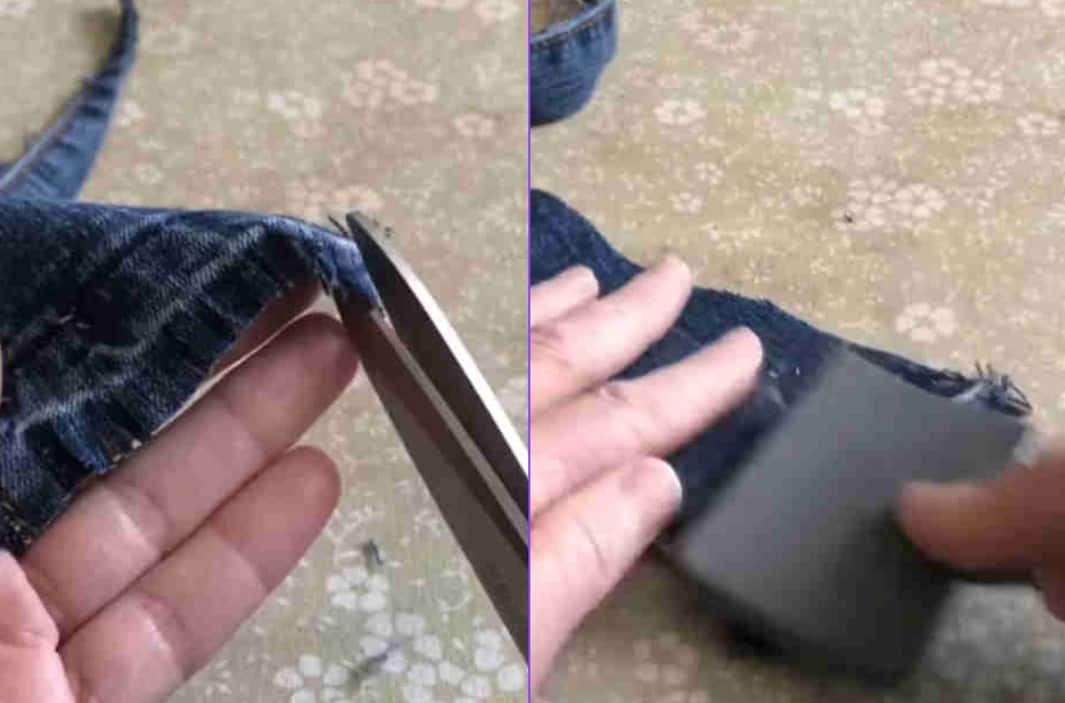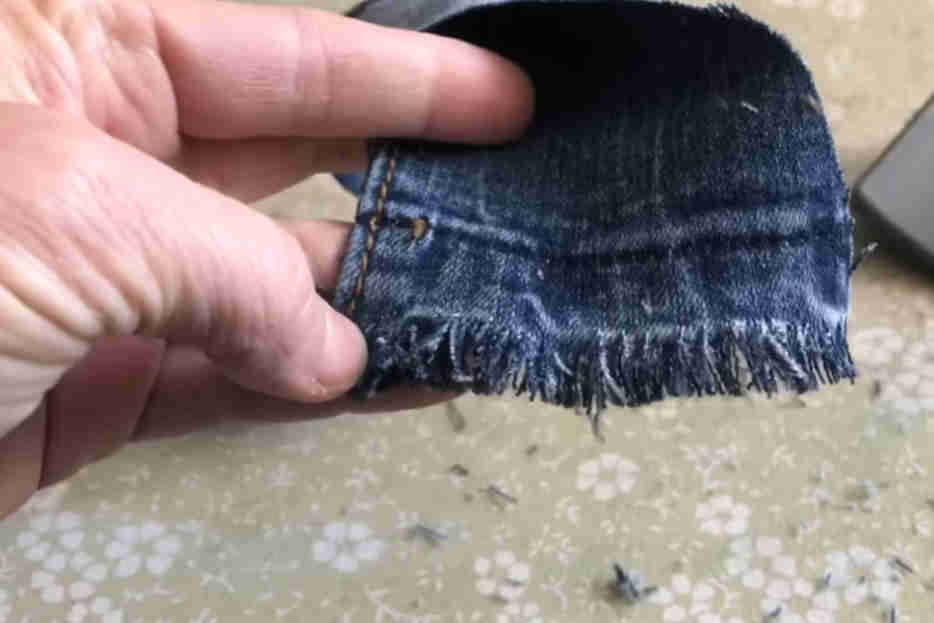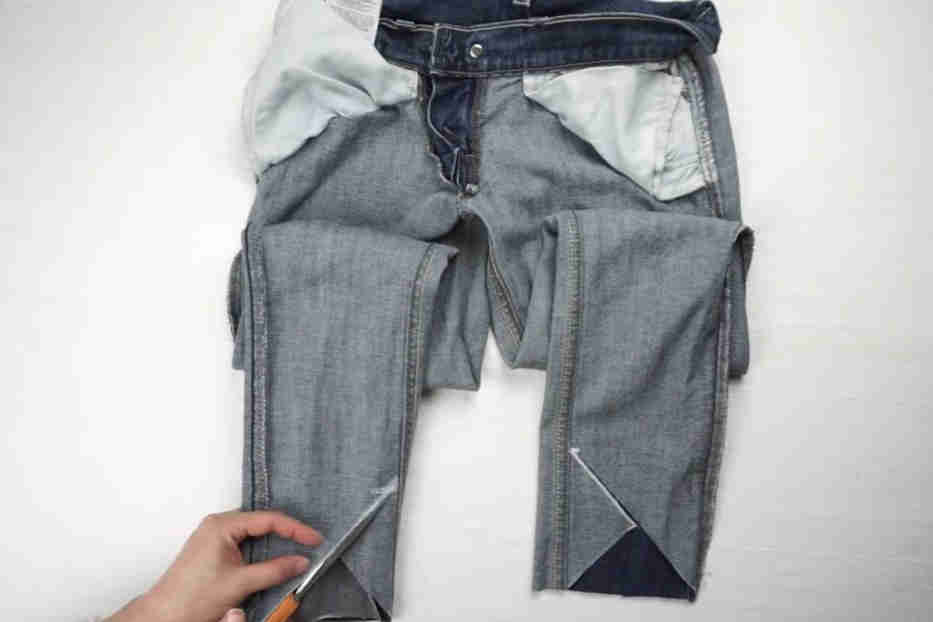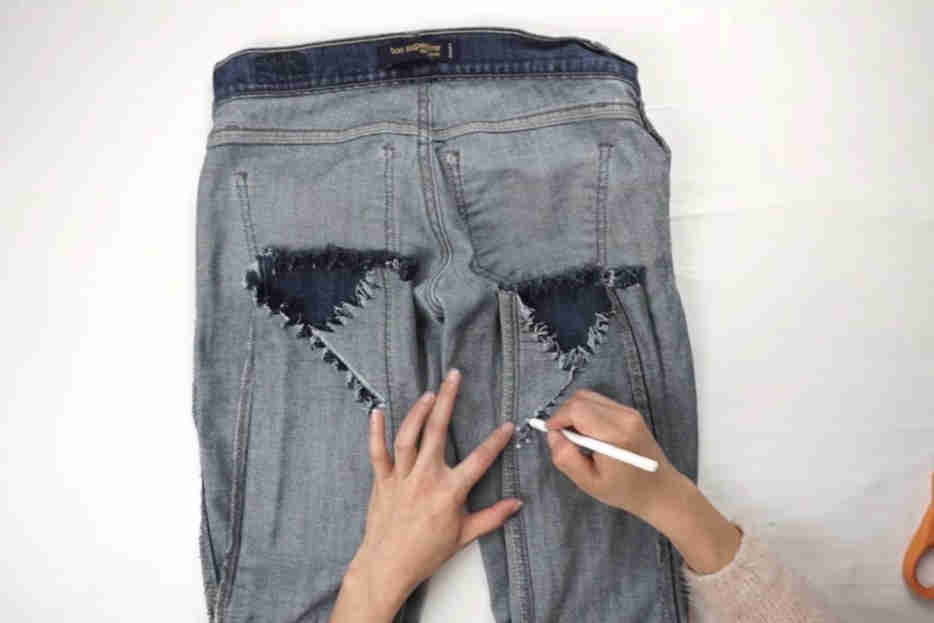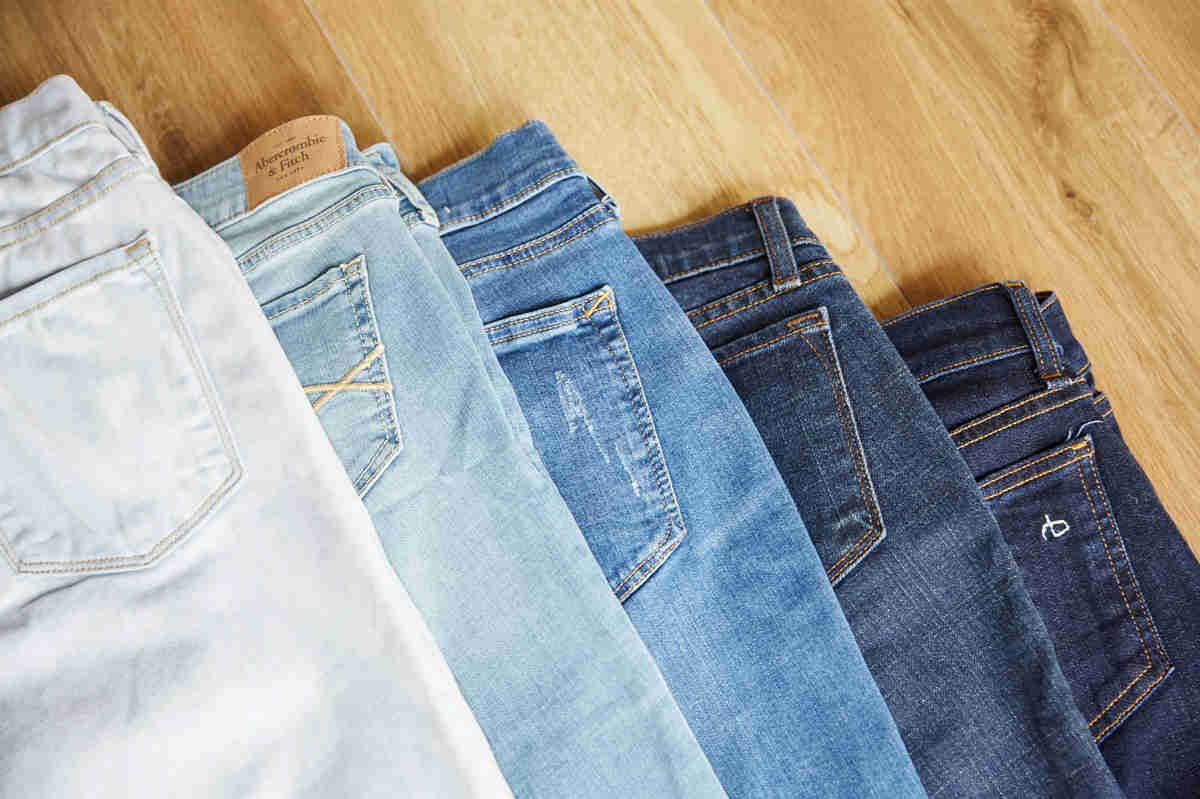Are you tired of those old boring jeans in your closet? Don’t worry, we are about to spice things up slightly. This article provides a simple DIY guide on how to fray jeans and give them a new gorgeous look.
Get those abandoned jeans, and let’s get down to business.
Frayed Jeans vs. Distressed Jeans: What is The Difference?
Although frayed jeans and distressed jeans look similar, there are some noticeable differences between them.
- Appearance: The hems are cut off intentionally in frayed jeans, leaving threads unraveled. Fraying can also occur in the pocket or knee areas. Distressed jeans, however, are deliberately altered with sandpaper or similar sharp objects to make the jeans look aged. Distressing may include minor cuts, patches, and rips.
- Techniques Used: You use scissors or razor blades to cut off the edges when fraying intentionally. An alternative method is constantly wearing the jeans until the edges fray naturally. Distressed jeans’ technique is more demanding. It involves cutting, sanding, scraping, or using chemicals to create a rugged look.
- Wear Intensity: Frayed jeans are only distorted around the edges and hem areas. Distressed jeans, however, are distorted on the edges, thighs, knee, and pocket areas, making it easy to wear out faster.
Tools for Fraying Jeans
Before we go down into the business of fraying jeans properly, let us look at some of the tools we will need.
- Jeans: You could use an old pair of jeans you no longer wear, or even a new pair that you don’t like the style of. You can fray any jeans- skinny jeans, bootcut jeans, mom’s jeans, boyfriend jeans, flared jeans, any type of jeans at all.
- Scissors: A pair of scissors cut the length of the jeans if you wish to reduce their size. It cuts the tip into thin slices before fraying. You can also use scissors to cut through any other part of the jeans, such as the knee, lap, pocket, or waist.
- Razors: Razors perform the same function as a pair of scissors. However, it is less suitable for reducing the length of the jeans because a razor will give you an uneven cut. You can only use razors to make tiny cuts on the knee, lap, or pocket areas.
- Pin/ Tweezers: Tweezers or pins pull the horizontal threads of the jeans to give that distorted, frayed look.
- Dog Brush: A dog brush distorts the tiny jean slices. It works like tweezers, but the only difference is that pulling the jeans with tweezers gives them a fine and slimmer look. But with a dog brush, you get a more exaggerated and fuller look.
- Washing Machine and Dryer: The washer frays the jeans further after picking them with your tweezers and using your dog brush. This tool is optional because you can wear your frayed jeans without tossing them in the washer or dryer.
How to Fray Jeans: A Step-By-Step Guide
With a Dog Brush
The fastest method to fray a pair of jeans is to use a dog brush. You can achieve that perfect fray you desire with a dog brush.
Step 1 – Cut the Jeans
- Reduce the length of the jeans by cutting the lower part with a pair of scissors.
- Don’t cut both legs simultaneously because you can have an uneven cut, especially if your scissors are not strong enough.
- If you like the original length of your jeans, carefully cut off only the Hem of the jeans.
Step 2 – Slice and Brush
- After cutting the jeans, use that pair of scissors to slice the tip of the jeans into tiny bits.
- Thinner slices are easier to fray, so make them as thin as possible. Once you finish slicing the tip of the jeans, get the dog brush and brush the area vigorously and vertically, from top to bottom.
- Always hold the brush handle firmly and apply enough pressure if you want the frayed area to appear full.
Step 3 – Wash and Dry
- Once you finish the previous step, place the jeans in the washing machine and warm-wash them.
- After washing, transfer the jeans to a dryer and moderate the heat.
- Please do not wash the jeans with hot water or dry them with excessive heat unless you want to shrink them and reduce their size.
- This step is optional, and you can choose not to do it, but doing this softens your jeans and smoothens the frayed area.
Here’s a detailed video on this technique:
With a Pair of Tweezers
This method might take more than just a few minutes, but it’s worth it.
Step 1: Fit the Jeans
- The first step is to wear the jeans in front of a full-length mirror and roll them up to the length you want to cut.
- Once you have achieved the desired length, mark that point using a pencil or a piece of chalk.
- Don’t work on both legs at the same time. You will likely make many mistakes and have uneven cuts if you do.
Step 2: Cut the Jeans
- Remove the jeans and transfer them onto a cutting board.
- Place a ruler between the points you marked earlier, draw a straight line, and cut off the excess length with scissors.
- Next, place the one you cut on top of the other leg, and cut off the exact measurement as you did with the first one.
- To make the jeans more stylish, mark another vertical line diagonally and cut through it to make a triangle.
Step 3: Slice and Fray
- Use scissors or a razor blade to make tiny slices along the triangle lines. Remember, the slices should be very small to make fraying easier.
- After slicing, run the jeans vigorously with both hands to distort the lines.
- Finally, grab your tweezers and start pulling the horizontal thread one after the other. Work your way up from the bottom.
This will be difficult at first, but the more you pick those lines, the looser the jeans will become, and the easier it will be to pick the rest of the slices.
Step 4: Make Dots and Stitch
- Make dots diagonally along the thorn area and stitch them back using a needle and thread. The idea is to give the jeans a more exaggerated look.
- While stitching back the lines, do not pull the thread too tightly. Doing this will make the legs of the jeans appear crooked.
- Also, it would be best if you did not make it too loose either because when the stitches are too loose, you see the gaps between the cuts, which might come apart easily.
Here’s a detailed video on this:
How to Style Frayed Jeans
One of the best things about frayed jeans is their versatility. It suits people of different ages, and you can wear them for any occasion. Below are a few ideas on how to style frayed jeans
- Frayed jeans + Blazers: When worn with blazers and the right camisole, frayed jeans give you a perfect blend of elegance, glamor, and a bit of funky. This combo makes an excellent fit for office hours if you throw in a pair of heels.
- Frayed jeans + T-shirt: These can also go with a pair of heels or a Converse; perfect for the club or an evening outing with friends. The simplicity of a T-shirt and the ruggedness of frayed jeans subtly complement each other.
- Frayed jeans + Sweatshirts: This combo gives you a casual look and keeps you cozy, especially in the winter. Frayed jeans and sweatshirts, when paired with Converse or boots, are suitable for less formal outings.
How to Maintain Frayed Jeans
Below are some helpful tips to keep your frayed jeans looking fresh and new all year.
Wash Less
Jeans wear out faster if you wash them frequently. Therefore, you should resist the urge to wash your frayed jeans after every wear.
If you are worried about wrinkles, you can hang them in the bathroom and let the steam from the shower straighten them out.
Apply Fabric Spray
A fabric spray will help keep your jeans fresh and free from offensive odors all day. Instead of washing them after each wear, apply a generous amount of fabric spray on the jeans and leave them to dry in the open air.
Do Not Use Heat
No matter how dirty you think your jeans are, do not wash or dry them with heat. Doing this will shrink the jeans and make them smaller. Also, it ruins the elastane in stretch jeans, making them stretch out even faster.
Therefore unless your original intention is to reduce the size of your frayed jeans, always wash them with cold water.
Air Dry
As noted earlier, heat is bad for your jeans. Therefore it is not advisable to toss them into the dryer after washing. Instead, hang them out to air dry in your shower or backyard.
Many people might kick against this idea because air drying gives the jeans a crunchy feeling. But not to worry, you can soften it up later by letting it sit in the dryer under low heat for a few minutes.
Hand Wash and Protect the Color
The best way to wash your frayed jeans is to hand wash them in a sink or basin.
Excess pressure might tear up the frayed areas if you use a washing machine. Also, handwashing can protect the color of the jeans because then you have more control over the fading. Before washing, turn your jeans inside out, always use mild detergents, and never bleach.
Here’s a video that will teach you tips to maintain jeans for longer:
Mistakes to Avoid When Fraying Jeans
Over-Fraying
Overfraying occurs when you cut down the edges of the jeans to such an extent that they become fragile. When you over-fray your jeans, it creates gaps in the fabric and reduces their durability.
To avoid overflying, start small and work your way up gradually. Fraying the jeans bit by bit will help ensure you do everything correctly. Alternatively, you can distress it naturally through constant use. When you have achieved your desired level of distress, line the edges with extra fabric or cloth glue.
Uneven Fraying
The fraying is uneven when one side is more pronounced than the other. Uneven fraying makes the jeans appear crooked and less attractive.
To avoid uneven fraying, measure the area you want to fray with a ruler and ensure equal measurements on both sides. And when you start distressing, measure both sides of the jeans periodically to ensure they are even.
Cutting Beside the Pockets or Seams
Cutting too close to the seams or pocket of the jeans can create a scission and weaken the structure of the jeans. This could considerably reduce the durability of your jeans.
Always leave considerable space between the seams and the area you want to fray to avoid this pitfall. Leaving the seams intact will help to maintain the strength of the fabric. If possible, do not cut the material at all. Use pumice stone or sandpaper to give the jeans a frayed look.
Conclusion
Learning how to fray jeans comes with several benefits, and trust me, you will be thankful you did. It makes your jeans more fashionable, comfortable, and versatile. Moreover, you can also shrink the jeans while fraying them to make them fit better.

Jessica Oliver is a fashion enthusiast with more than ten years of experience in the industry. She previously managed her own clothing store in New York before becoming a mother of three. With a passion for sustainability and a desire to share clothing care and recycling tips.

